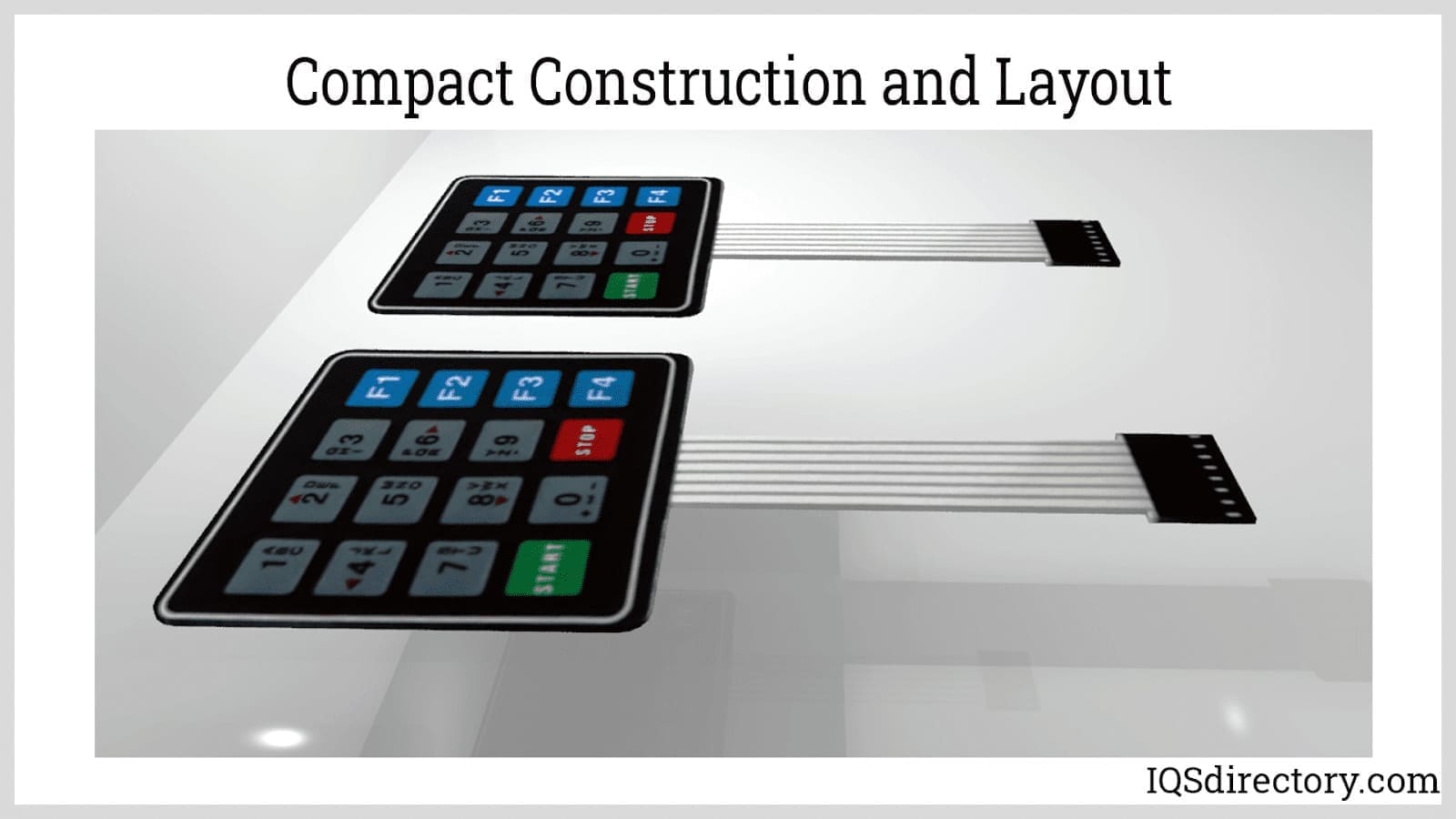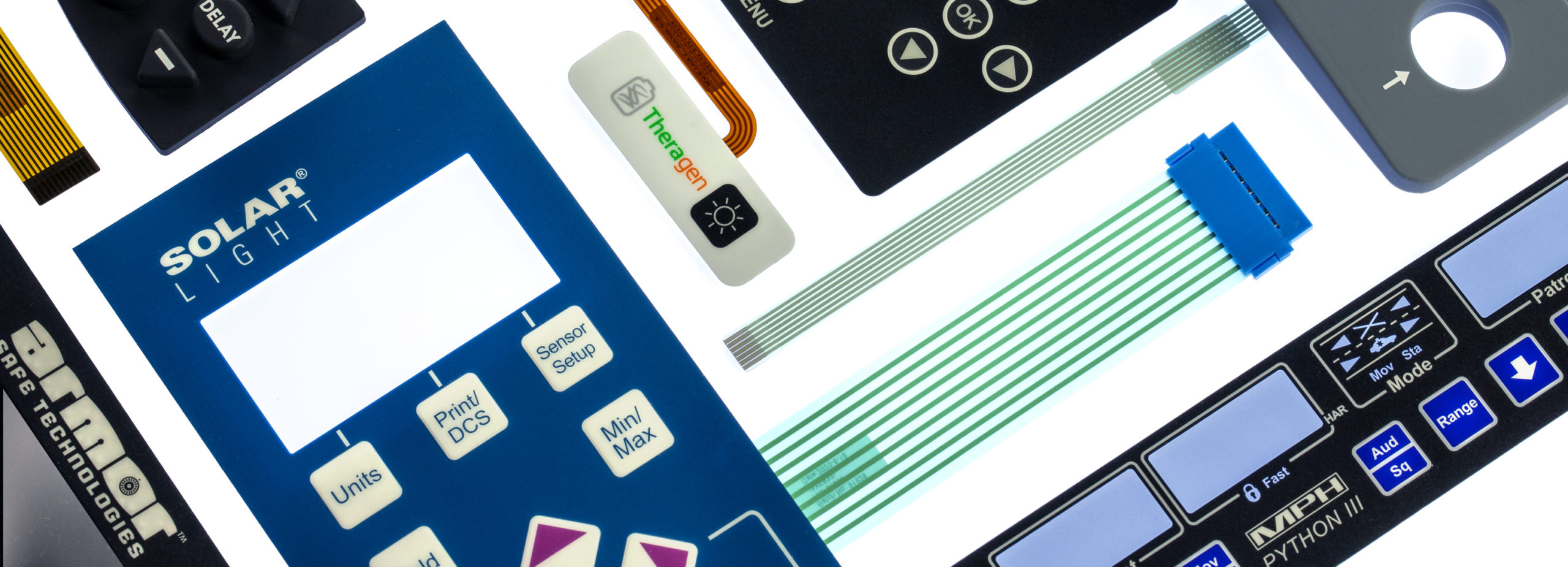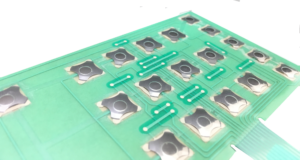Custom Membrane Switches for Specialized Applications: A Deep Dive
Custom Membrane Switches for Specialized Applications: A Deep Dive
Blog Article
Recognizing the Value of Membrane Switches in Interface
Membrane switches are indispensable elements in the design of effective customer interfaces, facilitating not just performance yet additionally improving visual charm and customer communication. As we explore the numerous benefits and future trends linked with Membrane technology, it ends up being clear that these buttons are a lot more than just elements; they stand for a convergence of technology and practicality.
What Are Membrane Switches?

The spacer layer, which contains glue properties, enables the splitting up of the circuit layer from the overlay, making certain that the button remains in a non-activated state up until pushed. When pressure is put on the overlay, it presses the spacer layer, linking the gap and completing the circuit in the underlying layer. This style not only decreases the physical room needed for conventional mechanical buttons yet likewise boosts the sturdiness of the device, as Membrane buttons are generally immune to dirt, wetness, and other ecological variables.
Generally discovered in applications varying from consumer electronics to medical gadgets, Membrane buttons are essential to modern-day technology, giving a effective and easy to use user interface that lines up with modern style requirements.
Advantages of Membrane Buttons
While numerous switch technologies exist, Membrane Switches offer unique advantages that make them especially preferable in numerous applications. One of the key advantages of Membrane buttons is their portable layout, which allows for space-saving applications in devices where realty is limited. Their thin account not just enhances aesthetic appeal yet likewise promotes lightweight construction.
Another significant benefit is their resistance to environmental factors. Membrane switches are usually secured against dampness, dirt, and contaminants, making them optimal for use in demanding settings, such as medical gadgets and commercial equipment. This durability expands the life expectancy of the switch, minimizing maintenance prices and enhancing dependability.
Furthermore, Membrane buttons can be customized to satisfy specific design requirements, incorporating unique graphics and shades that enhance user communication. Their tactile comments alternatives can likewise be customized to give a satisfying customer experience. Furthermore, Membrane switches are cost-efficient, specifically in high-volume applications, as they can be produced successfully.
Applications in Numerous Industries

In the customer electronic devices field, Membrane switches are prevalent in tools such as microwaves, cleaning makers, and push-button controls. Their responsive feedback and visual choices improve customer experience while offering a sleek, modern-day look. In addition, automobile manufacturers use Membrane buttons in control panel controls and infomercial systems, where space is limited, and individual interaction is crucial.
Furthermore, the commercial industry leverages Membrane switches in control panels for machinery and tools, permitting intuitive procedure in commonly severe atmospheres. Their resistance to chemicals and moisture guarantees long life and integrity in these applications. Overall, the adaptability of Membrane Switches adds substantially to their widespread usage, making them essential in different technical domain names.
Style Considerations for Membrane Buttons

When making Membrane switches, a number of crucial factors to consider should be thought about to make certain optimal performance and customer experience. To start with, the selection of products is vital; selecting resilient, high-grade substratums can improve the button's durability and resistance to environmental factors such as dampness and temperature fluctuations.
Secondly, the design of the graphic overlay ought to prioritize clearness and ease of use. Symbols and message need to be understandable, and the layout should facilitate instinctive communication (membrane switches). In addition, responsive responses is crucial; integrating a responsive dome or various other devices can improve the customer experience by pop over to this web-site supplying physical confirmation of activation
One more vital factor is the button's electric performance. Designers need to guarantee that the conductive traces are appropriately created to lessen resistance and prevent signal interference. This involves evaluating the needed actuation force and ensuring compatibility with the electronic components they will user interface with.

Future Fads in Membrane Technology
As innovation continues to breakthrough, Membrane buttons are poised to advance significantly, driven by developments in materials and producing methods. One arising trend is the consolidation of innovative products, such as conductive inks and flexible substratums, which enhance durability and lower the overall weight of Membrane switches. These products not only boost the responsive feedback yet additionally enable the layout of buttons that can hold browse around here up against harsher environmental problems.
In addition, the combination of touch-sensitive technologies is changing standard Membrane Switches into even more interactive customer interfaces. Capacitive touch sensors installed within Membrane button panels can offer an extra receptive and intuitive user experience, lining up with the expanding need for my review here sleek, modern-day designs in customer electronic devices.
Additionally, improvements in printing methods, such as digital and 3D printing, enable rapid prototyping and modification of Membrane switches. This versatility permits manufacturers to respond extra quickly to market needs and consumer preferences.
Lastly, sustainability is ending up being a substantial emphasis, with makers exploring eco-friendly products and procedures. As these patterns unravel, the future of Membrane innovation promises boosted capability, visual allure, and ecological obligation, solidifying their duty in advanced interface throughout numerous industries.
Verdict
In conclusion, Membrane Switches represent an essential element in the design of individual interfaces, incorporating capability with aesthetic adaptability. Their benefits, consisting of durability and resistance to ecological elements, make them suitable for diverse applications across numerous sectors. Thoughtful layout factors to consider boost user communication and experience. As advancements in modern technology proceed, the development of Membrane switches is expected to additional fine-tune interface, driving technology and improving use in a significantly complex technical landscape.
Membrane switches are essential elements in the design of effective user interfaces, assisting in not only performance but likewise improving visual charm and user interaction.Membrane Switches offer as a crucial component in numerous customer interfaces, facilitating a smooth interaction in between users and digital devices.While countless button modern technologies exist, Membrane Switches deal unique advantages that make them specifically desirable in various applications.Moreover, Membrane buttons can be personalized to meet certain design demands, integrating unique graphics and shades that improve individual interaction.In verdict, Membrane Switches represent a crucial element in the style of individual interfaces, integrating performance with visual flexibility.
Report this page